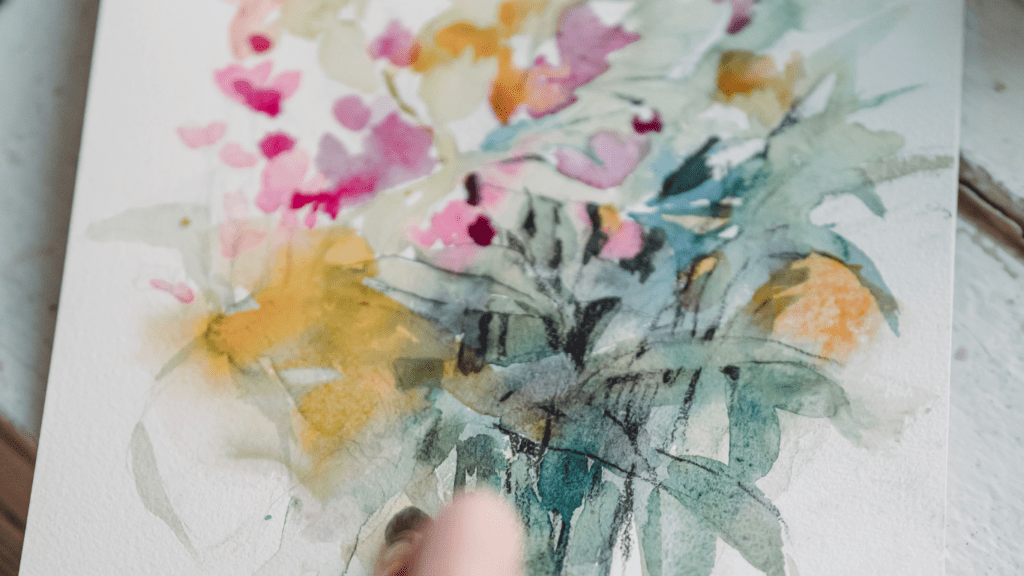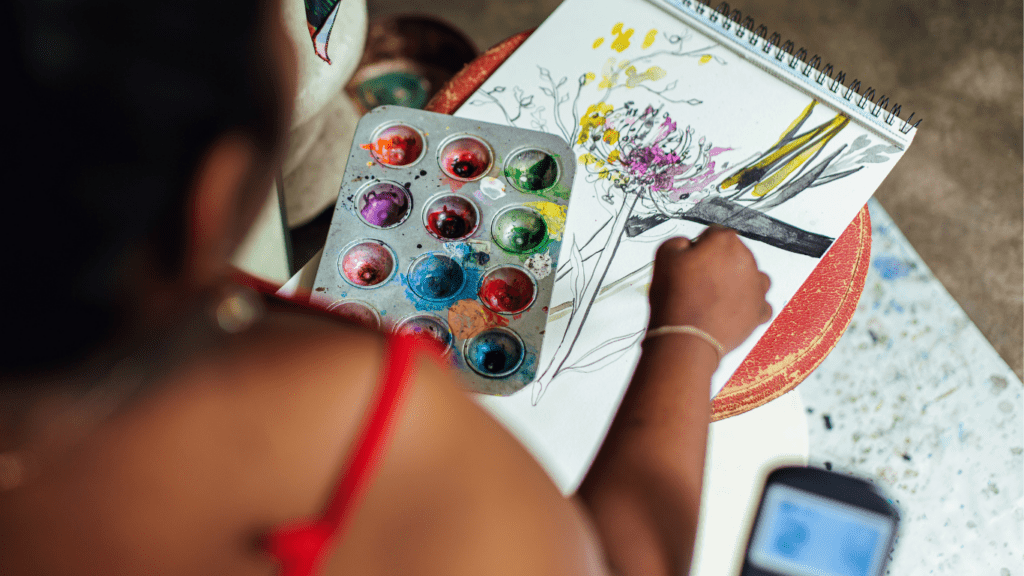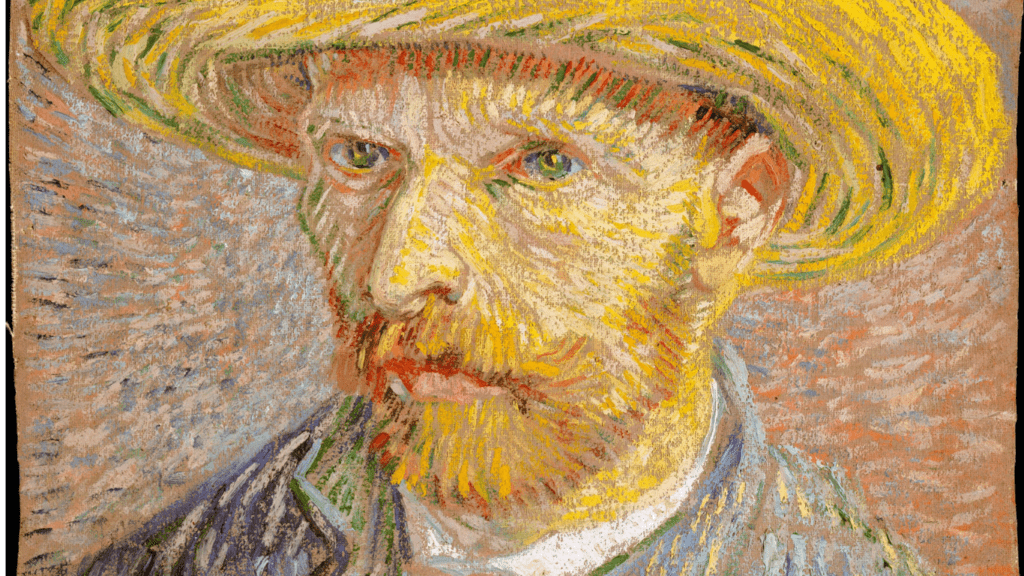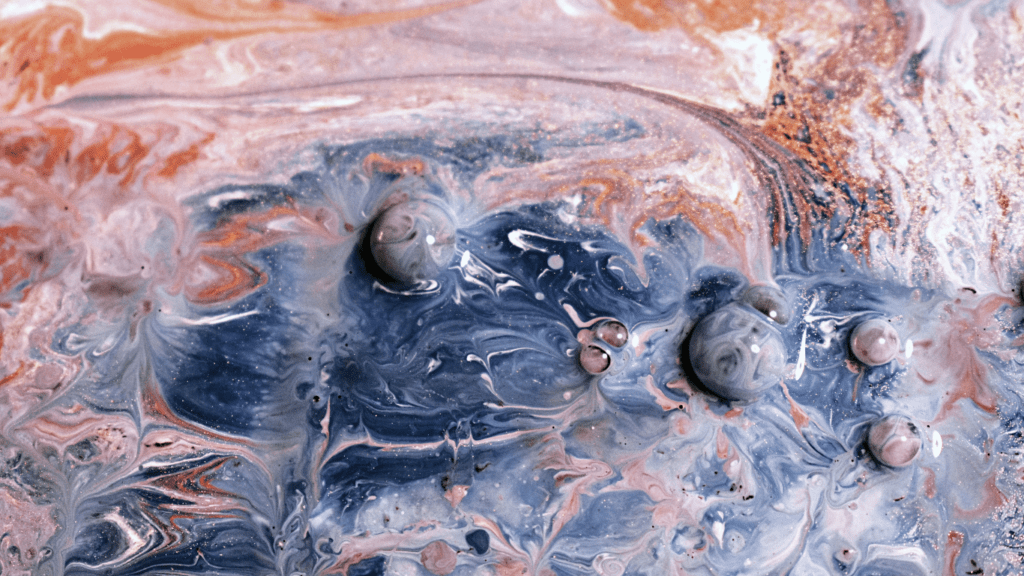Understanding Negative Space
Negative space, or the space surrounding the main subject in an artwork, enhances compositional balance. When effectively used, it brings attention to the focal point, creating a clear visual hierarchy. I find that toning down the clutter around the main elements helps focus the viewer’s eyes exactly where I want them.
Positive and negative spaces work together to create harmony. Negative space isn’t merely a background but a crucial element that shapes perceptions. Visualize the negative space as actively sculpting the positive forms, like in Escher’s works, where negative and positive spaces become indistinguishable yet integral.
For instance, the FedEx logo cleverly incorporates an arrow in its negative space, highlighting the brand’s dynamic nature. This subtle yet powerful use of negative space demonstrates its communicative potential beyond mere aesthetics.
Artists like Henri Matisse often employed negative space to simplify forms, stripping down the subject to its essence. By emphasizing the empty areas, the artist draws more impact from fewer elements, achieving a striking, minimalist elegance.
Negative space balances complex compositions too. In Hokusai’s “The Great Wave off Kanagawa,” the sweeping wave commands attention, while the sky provides a vast expanse of negative space that contrasts and complements the wave’s energy. This efficient balance guides the viewer’s gaze, maintaining engagement without overwhelming complexity.
To utilize negative space effectively, imagine the boundaries it creates within your composition. Negative space defines and sometimes even completes the forms. Experimenting with different configurations can reveal unique perspectives and balances, transforming ordinary scenes into compelling compositions.
Historical Perspectives
Understanding negative space in art involves looking back at its historical evolution. This section explores its early uses and how it has evolved through the centuries.
Early Uses in Art
Artists have long recognized the value of negative space. In East Asian art, particularly in Chinese ink paintings, artists used negative space to evoke vast landscapes and atmospheric depth. These early works show how empty areas can create balance and focus. Sumi-e, a Japanese ink technique, similarly uses minimal brushstrokes surrounded by empty space to suggest forms, capturing the essence rather than the detail.
Evolution Through Centuries
The concept of negative space evolved significantly over the centuries, intersecting with various art movements. During the Renaissance, artists like Leonardo da Vinci began integrating negative space to frame and enhance the realism of their subjects. The Impressionists, such as Claude Monet, experimented by employing negative space to emphasize light and color vibrations. In the 20th century, the advent of abstract art saw figures like Kazimir Malevich and Piet Mondrian using negative space to highlight geometric forms and explore pure visual language.
Negative space remains integral to modern art, influencing contemporary designers and digital artists in creating compelling visual compositions.
The Psychological Impact
Negative space has a profound psychological impact in art composition. It doesn’t just create a visual balance; it also affects how viewers perceive and emotionally connect with the artwork.
Perception and Interpretation
Negative space changes how viewers perceive and interpret an artwork. When used effectively, it guides the viewer’s eyes, creating a focal point and enhancing the subject’s importance. For example, in Hokusai’s “The Great Wave off Kanagawa”, the empty space around the wave intensifies the viewer’s focus on the wave’s power. This technique manipulates viewers’ attention, drawing them to specific elements. Studies show that our brains tend to seek out patterns, and negative space helps create these patterns, making the overall composition more memorable and engaging.
Emotional Resonance
Negative space evokes emotional responses by creating a sense of calm or tension, depending on its use. For instance, minimalist art often uses large areas of negative space, inducing a tranquil, contemplative state in the viewer. Contrast this with a more chaotic composition where negative space might be used sparingly to create a feeling of unease or dynamism. Henri Matisse’s cut-outs, which use bold shapes and extensive negative space, elicit feelings of joy and simplicity. This emotional resonance is crucial, as it not only enhances the viewer’s experience but also deepens their connection to the artwork.
Techniques for Utilizing Negative Space

Negative space, when used effectively, brings harmony and emphasis to art compositions. These techniques guide artists in leveraging this powerful tool.
Balancing Elements
Negative space balances elements in artwork. By spacing out components, it allows each part to breathe. For instance, consider a landscape painting with vast skies counterbalancing a dense forest. The empty space above highlights the details below. This technique aids in avoiding overcrowded scenes, ensuring each element stands out.
Creating Focus
Art employs negative space to create focus. Empty areas draw attention to the main subject. In portrait photography, artists often use blurred backgrounds (bokeh) to emphasize the subject’s features. This method intensifies the viewer’s engagement, directing their gaze precisely.
Case Studies of Masterpieces
Negative space plays a crucial role in creating timeless art compositions. By examining iconic masterpieces, we can better understand the strategic use of negative space.
Classic Examples
- Leonardo da Vinci’s “Mona Lisa” – Leonardo masterfully employs negative space around Mona Lisa’s figure, accentuating her enigmatic expression and drawing attention to her face. The background fades into soft hills, creating a serene setting that enhances the portrait’s focus.
- Henri Matisse’s “The Dance” – In “The Dance,” Matisse uses bold colors and negative space to emphasize the movement of the dancers. The empty space between the figures highlights their dynamic poses, creating a sense of rhythm and energy.
- Katsushika Hokusai’s “The Great Wave off Kanagawa” – Hokusai expertly balances negative space in the sky and the sea, heightening the drama of the wave’s crest. The empty space directs the viewer’s gaze towards the wave, emphasizing its power and the vulnerability of the boats below.
Contemporary Works
- Ellsworth Kelly’s “Spectrum IV” – Kelly’s use of negative space in “Spectrum IV” showcases his minimalist approach. The vibrant colors against a white background create a stark contrast, accentuating the simplicity and purity of the composition.
- Yayoi Kusama’s “Infinity Mirror Rooms” – Kusama uses negative space in her installations to evoke a sense of endlessness. The mirrored surfaces and dots create an illusion of infinite space, immersing the viewer in a boundless environment.
- Banksy’s “Girl with Balloon” – Banksy strategically places the girl and balloon on one side of the canvas, utilizing negative space to draw attention to their separation. This empty space amplifies the emotional impact, emphasizing themes of loss and hope.
By studying these masterpieces, we see how negative space enhances composition, draws focus, and conveys deeper meanings, proving its power across art history.
Practical Applications for Artists
Exploring practical ways to utilize negative space can elevate an artist’s composition, making it more impactful and visually appealing.
Tips and Tricks
- Simplify Elements: Start by removing unnecessary details to enhance the focus on the main subject. For example, in a landscape, eliminate clutter around the focal point to draw attention to it.
- Use Contrasting Backgrounds: Employ contrasting backgrounds to make the main subject stand out. In portraiture, use a plain or gradient background to emphasize the figure.
- Experiment with Shapes: Create deliberate shapes with negative space. In abstract compositions, negative space can form secondary images that add depth.
- Balance Composition: Ensure balanced distribution of positive and negative spaces for harmony. For instance, use equal parts of filled and empty spaces in a still life to achieve visual stability.
- Frame the Subject: Use negative space to frame the subject naturally. Utilize surrounding empty space to guide the viewer’s eye directly to the focus.
- Overcrowding: Avoid cramming too many elements into one composition, which diminishes the effect of negative space. Provide ample breathing room around key subjects.
- Ignoring Proportions: Failing to maintain proportions can disrupt balance. Always ensure negative space complements the scale of the main elements, like in architectural drawings.
- Uniform Negative Space: Using uniform negative space throughout a piece can lead to monotony. Vary the size and shape of negative spaces to create dynamic compositions.
- Lack of Contrast: Insufficient contrast between positive and negative spaces can make the image flat. Use different shades and tones to distinguish between them in monochromatic artworks.
- Misplaced Focus: Placing negative space in the wrong areas can confuse the viewer’s focus. Position negative spaces strategically to guide the eye naturally across the composition.





